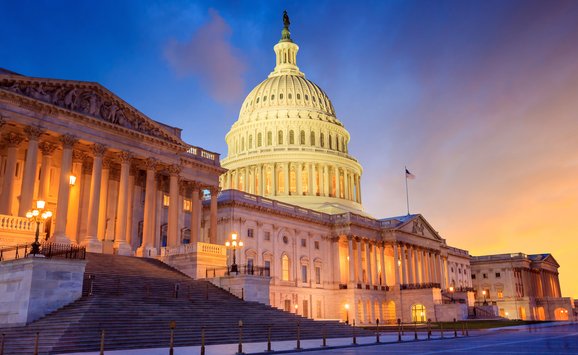The foregoing assessments of the effects of a decade and a half of environmental regulation include stories of particular water bodies that have been cleaned up and air pollution problems that are no more. They refer to costs, and sometimes mention inefficiencies and excesses, and even call for greater realism and more research. But the bottom line is a catalog of successes and the perception of changed public attitudes. It might also be added that environmental issues generally have not divided region from region or rich from poor in the ways that early analyses predicted might well be the rule.
But if a retrospective look is also to help deal with the future, it is not sufficient to chronicle successes so far. We must look to see what groundwork has been laid for the long run. A decade and a half, after all, is not a very long time, and the residuals from human consumption and production will be with us always. One possible effect of all the environmental regulation since 1970 might be to make the next fifteen years easier—or harder.
From this perspective, it seems fair to say that the record is mixed, the effects modest. Consider four long-run concerns:
- How are we dealing with the interrelatedness of environmental problems?
- How are we handling the interregional character of major emerging problems?
- What kind of long-run incentives are we providing to private decisionmakers?
- And, perhaps more fundamentally, how are we reconciling opposing views of what environmental regulation is all about, whether in terms of ethics or engineering or economics?
Interrelated problems
The environment must be managed with a broad view toward all potential problem areas, including the troposphere and atmosphere, the land and water surfaces, and underground aquifers. Horror stories abound when this proposition is ignored. Most often they involve the transfer or escape of untreated wastes from one medium to another that is so little understood that we do not anticipate the results. Thus, putting hazardous chemical wastes into open landfills once appeared a cheap and therefore clever strategy to decisionmakers who had not been made aware of the dangers of so doing. Similarly, laws mandating air or water pollution control have produced mountains of solid waste we find hard to ignore but harder still to dispose of safely.
Neither our laws and regulations nor our form of legislative oversight are set up to deal with this reality. Rather, for historical and political reasons, environmental statutes often emanate from different congressional committees and address problems one at a time and in isolation. A question for the future is whether this will continue to be so, or whether we can advance to coordinated environmental management. Experiments by the US Environmental Protection Agency (EPA) and research by outside experts now are exploring this question. The results may or may not lead to sweeping changes in the current system, but at a minimum, it is clear that there cannot remain unregulated “sinks” that allow for the cheap disposal of residuals. The “Spaceship Earth” metaphor is powerful in this regard—there simply is no “elsewhere” on a heavily populated planet.
Interregional problems
If environmental regulation has generated surprisingly little interregional conflict, in contrast to predictions, there is one big exception to the rule: acid rain has set region against region. Analyses of the phenomenon generally stress long-distance transport of sulfur and nitrogen oxides from areas where emissions are heavy to areas where acids are deposited. Ozone also is thought to “migrate” from region to region. When this is the structure of the problem, solutions must either boldly impose costs on one region and confer benefits on another, or involve transfers of one sort or another in the opposite direction so that the gainers pay for their gains. Neither outcome is easily legislated in our system.
However, the major statutes mostly address local parts of the environmental puzzle. That is, the laws are written as if discharges and effects, and costs and benefits, are located in the same region. This, coupled with the national uniformity generally required in standards, has tended to short-circuit interregional squabbling. But things will not be so simple in the future. Indeed, the past five years already have seen a half-dozen attempts to force EPA to judge interstate frays over cross-boundary pollution. These have been sidestepped in one way or another, often because of the technical difficulty of resolving the disputes. As technical understanding of long-range pollutant transport improves, however, it probably will be increasingly difficult for EPA (or the Congress) to avoid judgments and solutions.
Nor is there any reason to expect this necessity to be confined to sulfur or nitrogen oxides or hydrocarbons discharged to the atmosphere. Nonpoint sources of water pollution, for example, may well be concentrated in upstream, heavily agricultural states, so that a major effort to reduce this form of “discharge” may impose costs largely on the agricultural sector and confer benefits largely on those downstream who withdraw water or use it for instream recreation. Perhaps even more threatening could be interregional movement of contaminated groundwater. If a major regional aquifer becomes contaminated in one state, those jurisdictions “downstream” will want action—probably dramatic and expensive action—to protect their uses.
Existing legislation is not well designed to deal with such problems, and crafting individualized solutions for problems with well-identified winners and losers is not easy. The litigative alternative is slow and uncertain. This inability to handle interregional problems, then, is one potentially major flaw in our foundation for the future. It almost certainly requires a generic solution before particular interests are committed in a particular battle. Such a solution might involve some taxing and transfer scheme aimed at spreading costs beyond the identifiable region or group “causing” the problem. Whether this could be so symmetric as to attempt to tax away the benefits from the “victim” group is another matter, one related to the moral or ethical views of pollution discussed later.
Long-run incentives
The US pollution-control laws crafted in the 1970s have at their heart an ethical view we treat at greater length in the next section. Here, it is sufficient to note that the view was translated into a pollution-control imperative that stressed “doing your best” at all times. That is, the idea was to put dischargers under constant pressure to adopt the best existing technology. Although this approach has a certain surface appeal, “ratcheting down” the discharge standards each time technology improves removes any incentive for dischargers themselves to seek technology improvements. The burden of supporting research, of convincing reluctant sources that new developments really work, and of gathering evidence sufficient to justify characterizing them as “best” (practicable, conventional, available, or whatever) falls entirely to the EPA or to the struggling manufacturers of pollution-control devices. In other words, we lose the input of those arguably the most knowledgeable about the process—the regulators themselves.
A related long-run matter is monitoring and enforcing continuing compliance. Studies of monitoring activity and continuing compliance, whether by government or by private organizations, agree that while self-monitoring by sources generally is required, very little is being done to check up on—or even to stay current with—the self-reported data. Such fragmentary evidence as exists further suggests that rates of noncompliance are substantial enough to worry about.
This problem is related to the technology incentives issue, because existing law’s strong focus on technology and its installation has led to an emphasis on monitoring for initial compliance; that is, for the installation of the desired technology. While it would be an overstatement to say that the current practice is to check on the installation and initial operation of pollution-control equipment and then to ignore what happens day to day, it is certainly true that current monitoring efforts do not even begin to approach those that would be necessary to produce a long-run incentive for continuing compliance.
For the long run, pollution sources should face a reasonable probability of detection and a realistic penalty when contemplating violation of existing day-to-day or week-to-week discharge limits. And they should be able to capture some substantial part of any reduction in the cost of meeting those limits brought about by the development and introduction of new technology.
Economic and ethical viewpoints
The environmental legislation of the past fifteen years reflects a belief that pollution is a wrong in itself. This contrasts with the view that controlling pollution basically is a matter of supplying the proper signals to private or public decisionmakers. In the latter approach, some pollution is inevitable: the laws of conservation of mass and energy prohibit us from truly getting rid of anything. Pollution control simply means changing the form, substance, or timing of discharges. Because too much pollution is likely to result from an unregulated free market, government must balance the benefits (however defined and measured) of pollution control against its costs and choose discharge limits for particular places or substances or other policy instruments to achieve what the market by itself cannot. In this view, what is wrong is for a source to exceed its discharge limit or to practice fraud in its self-monitoring report. Discharges within the defined limits are not seen as wrong.
The ethical view of pollution as intrinsically wrong leads to a long-run goal of zero pollution (and to the costly continuing interim requirement to do the best that existing technology will allow, as just discussed). Seeing pollution as sinful also shores up the position that, as with freedom of speech, citizens have an inalienable right to be free of all environmental risks. Some argue that this right extends even to the most sensitive individuals and covers even relatively minor health effects. If pollution is wrong but temporarily necessary, the logic runs, we should at least try to eliminate all its deleterious effects.
This contrast in views between pollution as a wrong and pollution as a necessary inconvenience also is manifested within EPA. Some in the agency would increase the role of cost-benefit or risk-benefit analysis in decisionmaking; for others, such exercises are at best useless and at worst immoral. Notice that this debate is not over the capabilities of cost-benefit analysis—what can and cannot measured—but over whether any measuring should be done.
This is not a healthy tension, it seems to us, because the absolute character of the ethical view rules out analysis in general. It discourages the seeking of information about what can be or is being achieved and at what prospective or actual cost. Much more importantly, it would put environmental regulation on a different plane than other governmental activities—even medical research and the support of the medically indigent—that ought be seen as having at least as great a claim to this ethical standing.
In any event, the laws of physics, within which we have no choice but to operate, dictate that leftovers (residuals) are inevitable. We can reduce the total amount through recycling, but we can never squeeze it to zero.
Thus, we must decide what to do with them, not whether to allow them. Our choices can range over the form the leftovers can assume and the timing and place of their discharge to the natural environment. Recognizing these limits pushes us toward weighing options. Thus, in our view, one important foundation for the long-run future of environmental policy is to acknowledge the uncomfortable fact that pollution is a ubiquitous problem and not simply a short-term ethical aberration created by modern market societies. With this lesson in mind, we can build on the substantial successes of the past fifteen years and deal with the no less important business of managing society’s residuals into the indefinite future.

Clifford S. Russell and Paul R. Portner are senior fellows in RFF’s Quality of tile Environment Division, where Russell also serves as director. A slightly different version of this article appears in the July/August 1985 EPA Journal.






